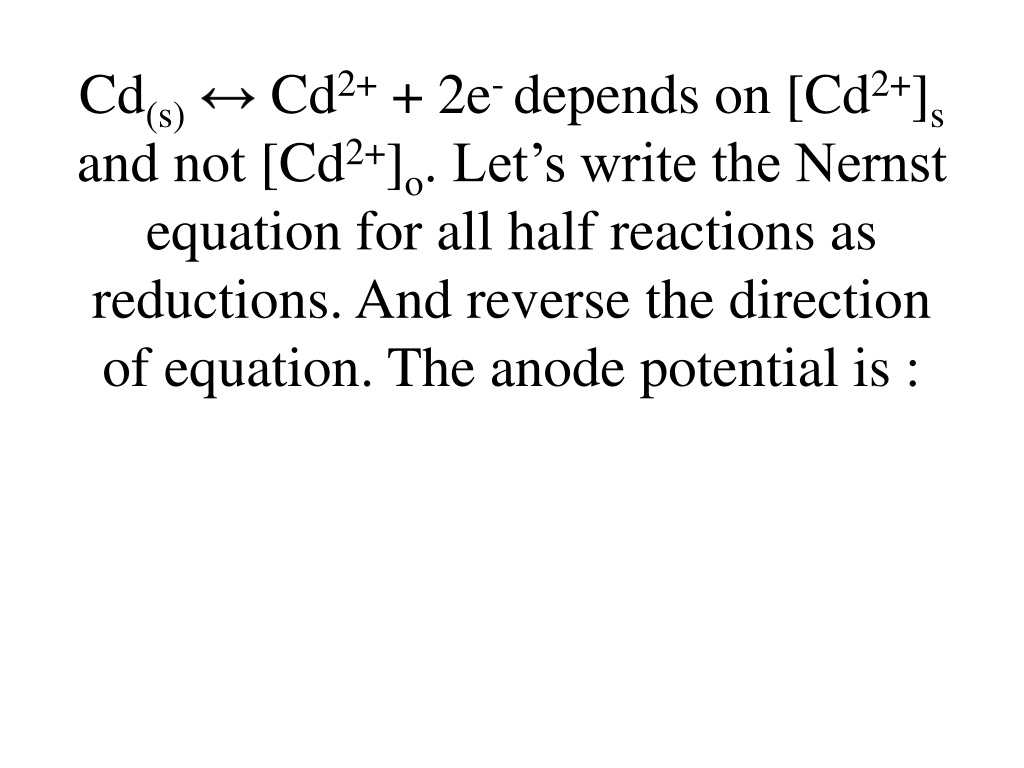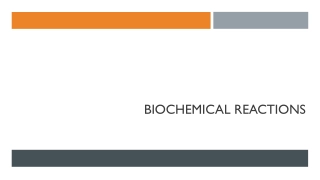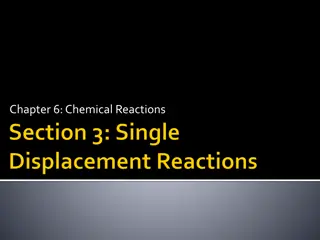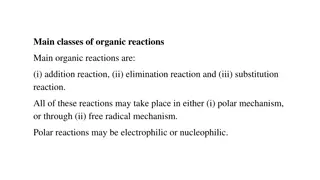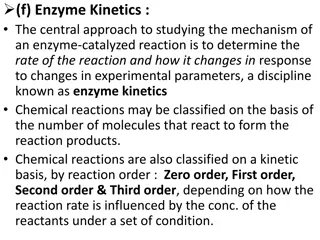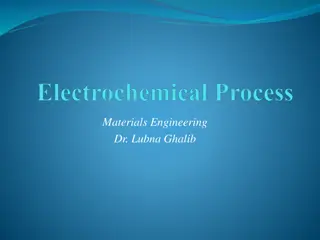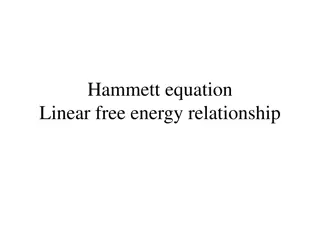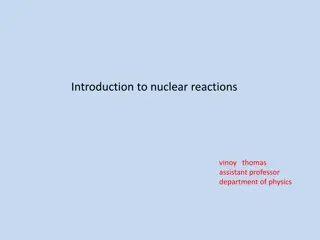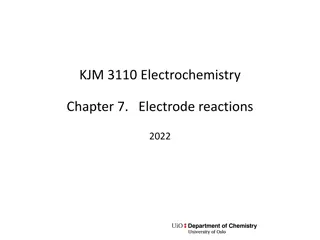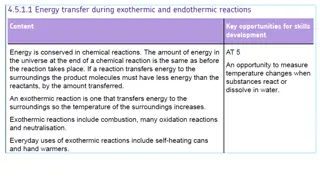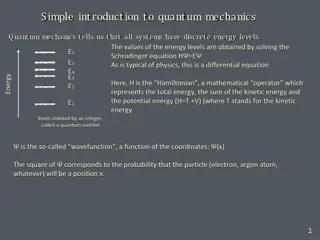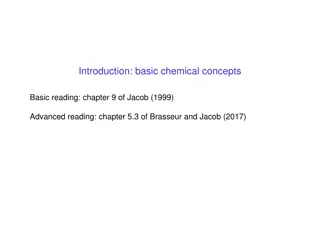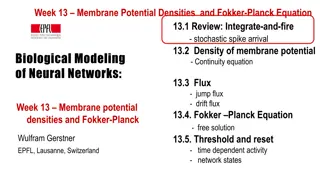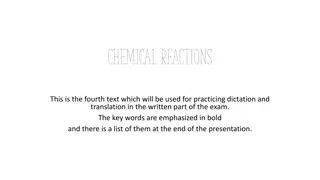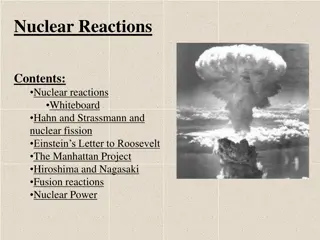equation for all half reactions as
Impact of concentration polarization on electrochemical cells. Learn about Nernst equations, anode potential, and how deviations in cell behavior occur. Discover the effects of ohmic potential and concentration polarization on cell resistance and voltage output. Visualization of various scenarios provided.
Uploaded on Feb 18, 2025 | 0 Views
Download Presentation

Please find below an Image/Link to download the presentation.
The content on the website is provided AS IS for your information and personal use only. It may not be sold, licensed, or shared on other websites without obtaining consent from the author.If you encounter any issues during the download, it is possible that the publisher has removed the file from their server.
You are allowed to download the files provided on this website for personal or commercial use, subject to the condition that they are used lawfully. All files are the property of their respective owners.
The content on the website is provided AS IS for your information and personal use only. It may not be sold, licensed, or shared on other websites without obtaining consent from the author.
E N D
Presentation Transcript
Cd(s) and not [Cd2+]o. Let s write the Nernst equation for all half reactions as reductions. And reverse the direction of equation. The anode potential is : Cd2++ 2e-depends on [Cd2+]s
E(anode)= E(anode) (0.05916/2)log[(1/[ Cd2+]s)] ............................................................... ...........(2)
concentration. If the current flows so fast that Cd2+ cannot escape from the vicinity of the electrode as fast as it is made, [Cd2+]s,will be greater than [Cd2+]o. This is concentration polarization.
The anode potential in eqn (7) becomes more positive and the cell voltage E = E(cathode) E(anode)becomes more negative.
when [Cd2+]s> [Cd2+]o. The resistance of the cell is 6.42 . The straight line shows the behaviour expected from ohmic potential. Deviation from the straight line at high currents is due to concentration polarization.
the magnitude of voltage available (output) from a galvanic cell and increases the magnitude of the voltage required (input) for electrolytic cell.
to or from an electrode as rapidly as they consumed or created, concentration polarization exists and [X]s= [X]owhere X is concentration of electro active species.
Effects of Ohmic potential and Concentration polarization
Output of galvanic cell; Egalvanic= Enernst IR Econc.
Input to electrolysis cell; Eelectrolysis= - Enernst IR - Econc.
stirring transports species through the cell. Increasing ionic strength decreases electrostatic forces between ions and electrode. These factors all affect the degree of polarization. Also the greater the electrode surface area, the more current can be passed polarization.
(d) Change ionic strength to increase or decrease attraction between the electrode and the reactive ion.
behaviour of Pt and Ag cathodes at which reduction of H3O+occurs at pH 3.2 in O2-free, aqueous H2SO4using saturated calomel electrode.
on here? If the chemistry is the same, why doesn t it require the same voltage for different electrodes? To make matter worse, when a mercury electrode was used in the same experiment, reduction did not begin until -1.3V.
than one anticipated. The difference between the expected voltage (after accounting for IR drop and concentration polarization) and the observed voltage is called the over potential (Eover.). The faster you wish to drive on electrode reaction, the greater the over potential that must be applied.
Effects of over potential, Concentration polarization
Output of galvanic cell; Egalvanic= Enernst IR Econc. Eover.
Input to electrolysis cell; Eelectrolysis= - Enernst IR - Econc. Eover.
electrode reaction. The activation energy reactants can be converted to products. The higher the temperature, the greater the number of molecules with sufficient energy to overcome the barrier and faster the reaction proceeds.
from a metal to H3O+(a) with no applied potential (b) after a potential is applied to the electrode. The over potential increases the energy of the electrons in the electrode.
barrier that must be overcome and increase the rate of electron transfer. Over potential is the voltage needed to sustain a particular rate of electron transfer. The greater the rate, the higher the over potential must be. Thus over potential increases as current density (A/m2) increases. The activation energy for the chemical reaction is different for different metals, which explains the different behaviours of a Pt and Ag electrodes in Figures (8).
of ohmic potential and over potential. It is called Enernst(rather than Enernst) because, not the spontaneous galvanic reaction. The required electrolytic voltage is Eelectrolysis= - Enernst IR over potentials
Diffusion current at dropping electrodes
What number of electrons was involved in the electrode reaction?
What is the half-wave potential for these reactions?
Calculate D for Nitrate in the dimethylformamide.
Effect of Activity on electrode Potential Eo
